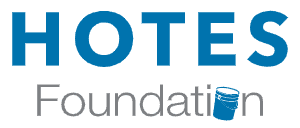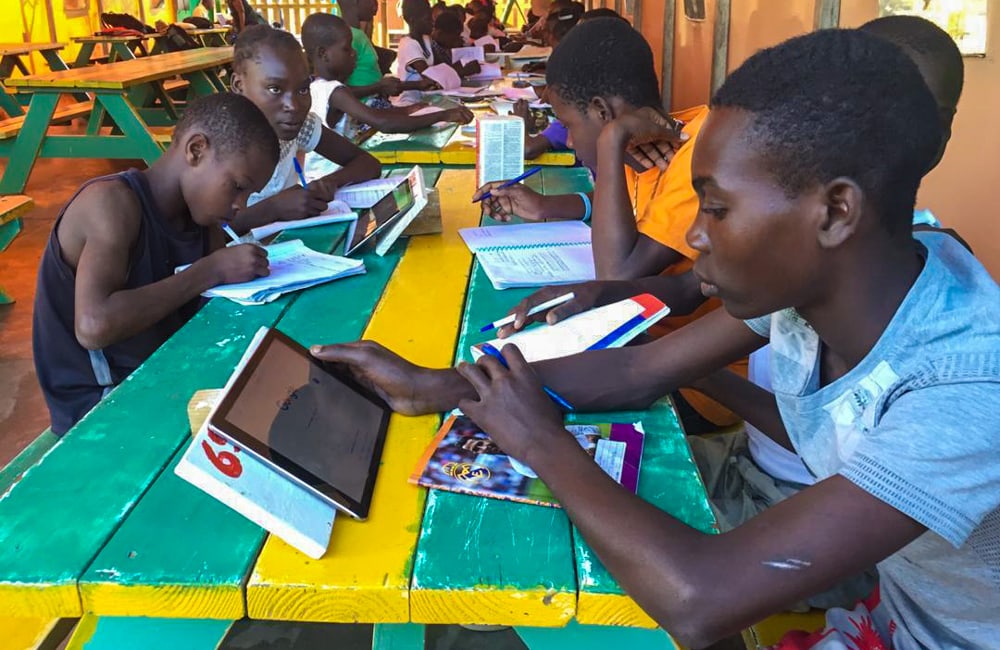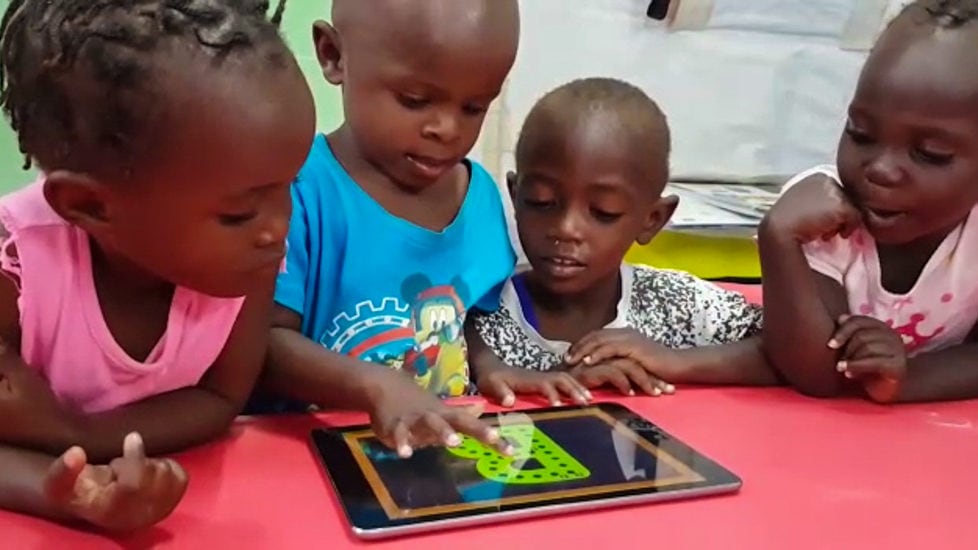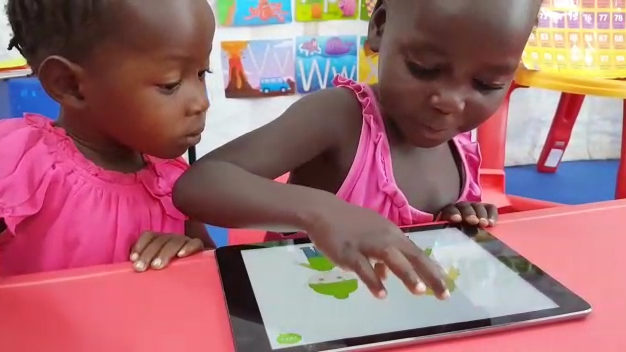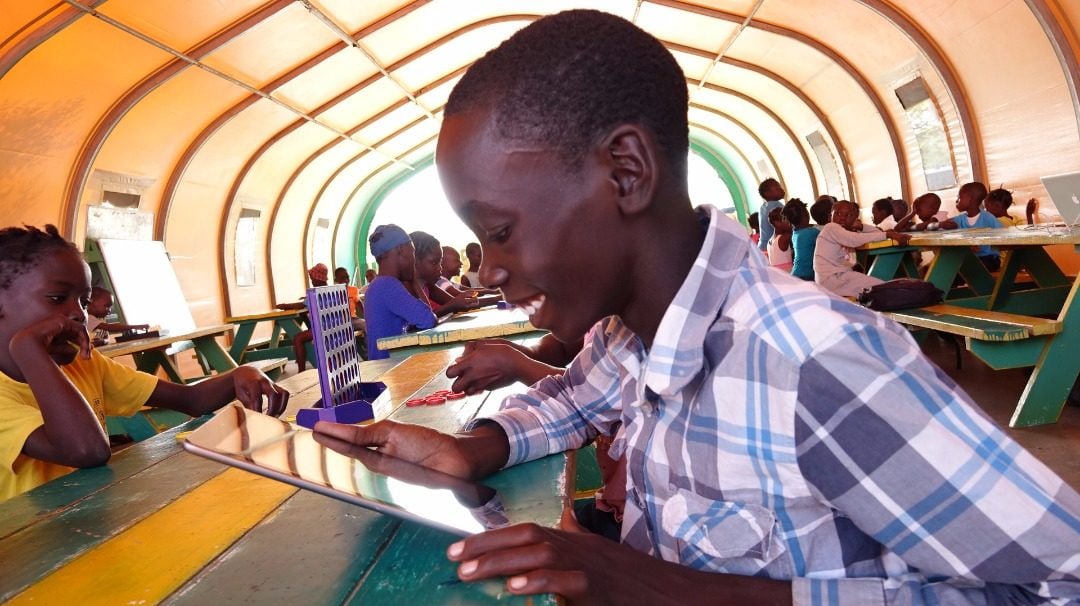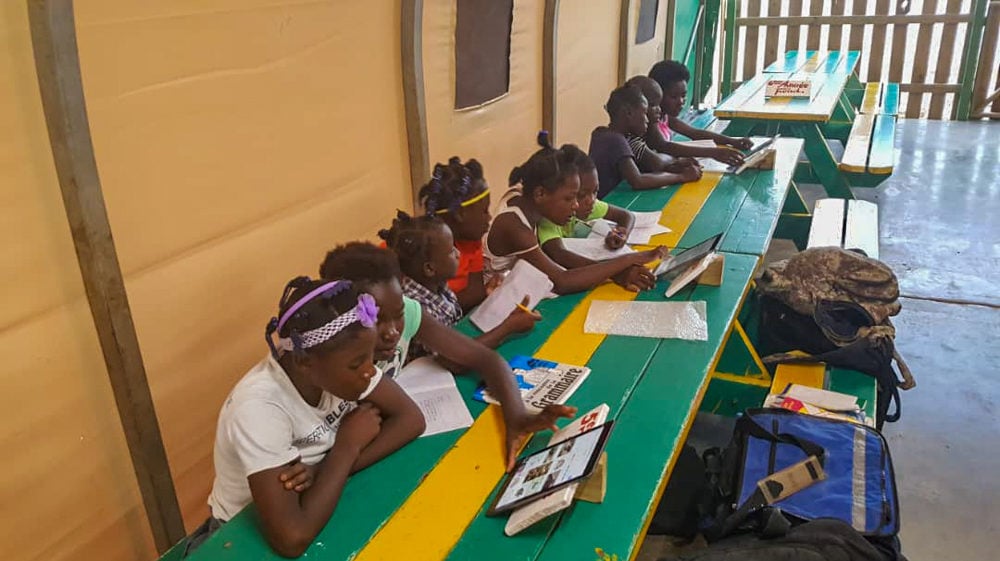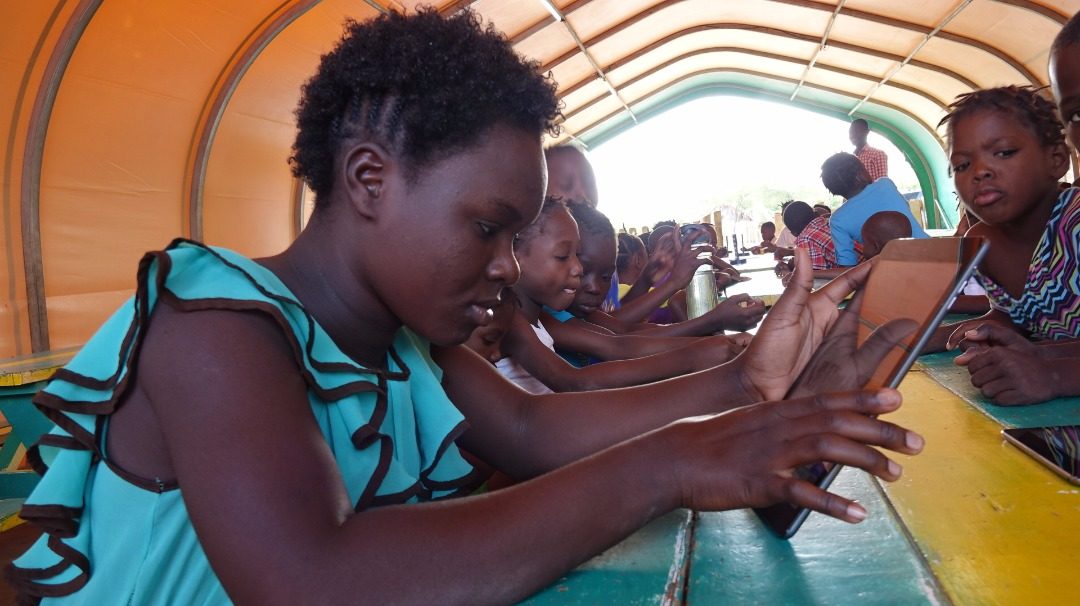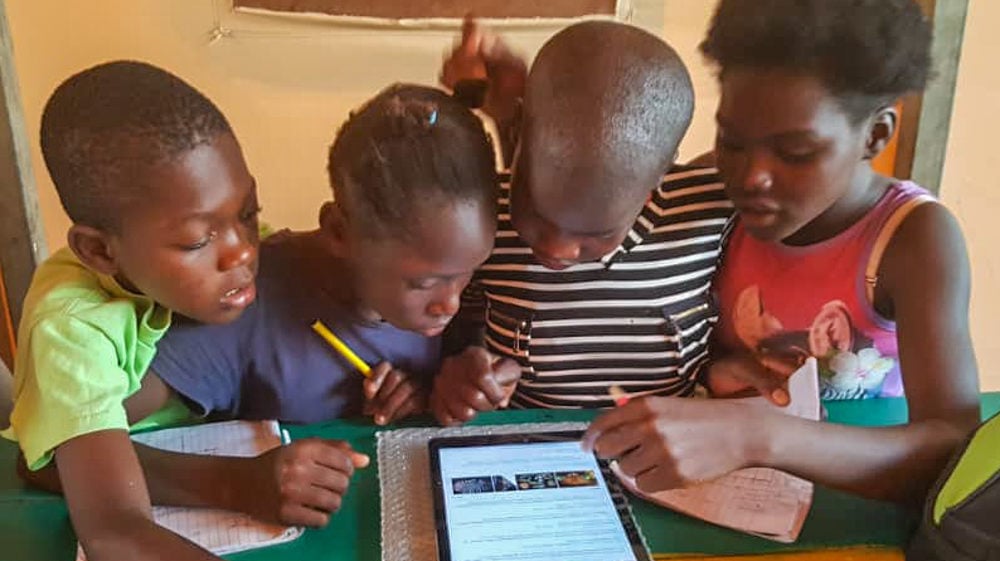Closing The Poverty Gap With Technology
Written By Leslie Zadorozny, Hotes Foundation Media Team Manager
It’s mid morning as preschoolers sit at their colorful, height-appropriate tables and curiously surround a tablet opened to an alphabet learning application. Each child takes their turn tracing various letters across the touch screen followed by cheers & celebration from their teachers and peers. Later in the day, students return from school and shuffle into the dining hall ready to study and work on school assignments. Upon entering, the kids disperse into grade level groups and begin working at the tables. Between homework assignments, students have the opportunity to use tablets with access to the Internet and loaded with a wide variety of learning applications from math & science to spelling & literature. In this day and age, the scenes of children using tablets are quite familiar and normal. Apple reports there are 7 million iPads used in U.S. schools and more than 10 million iPads in schools worldwide. Access to technology for education is crucial if children are to excel in a digital age. What if I told you that the kids I just described were living in extreme poverty? Would this surprise you?
For youth living in extreme poverty, where parents struggle to even pay for school, having an iPad is almost inconceivable. Here at the Hotes Foundation, however, we see it as a necessity to close the poverty gap. For an impoverished community, having access to technology and the Internet connects them to the rest of the world and gives them the opportunity to gain more knowledge at a faster rate. At the start of 2019, we made it happen for the youth of Lake Azuei by providing 10 new iPads for the mud hut village. Specifically, these tablets are used by the preschoolers in our daycare and by the students in our Homework Club.
The Lake Azuei Daycare is free childcare for any families in the community, but also so much more. For the children, the daycare provides a safe, clean environment and early education spanning from the alphabet to counting and now the curriculum has expanded with technology. Using the tablets, the young students explore a variety of learning applications. Not only do the tablets introduce technology to the 3 year olds, but they also introduce a new, interactive way of learning. The lead daycare teacher explains, “The kids play games and learn the same topics that we teach in the daycare such as letters, numbers, colors, and shapes. With the iPads, they are gaining more knowledge that opens their minds.”
Once the kids graduate from daycare, they will have access to the iPads in Homework Club, an after school program where students study and work on school assignments together. One student, Alexandre Jean-Baptise, was surprised about using the tablets, “The first time I saw the iPads, I didn’t think that they would be for the villagers, but when I saw that the Hotes Foundation gave the Homework Club the iPads I was very happy.” Now, students can use the tablets as a learning tool to help them do their homework and do research. Another student, Saphira Pierre, explains how the iPad helps her study, “I use the iPad to do my biology homework, history, reading and other research like word definitions. The iPad helps me learn lots of new things about the world and America. For example, I learned about the biggest rivers in the world.” For these students in a mud hut village, the tablets connect them with more information about the world, opening their minds to more possibilities.
Both the daycare and Homework Club have already made an enormous impact on the village growing out of poverty into a thriving community. The children are healthier, they are excelling in school…and now they are more connected than ever to the rest of the world through this technology. Staff and students are able to use the Internet, an abundance of information at their fingertips. I asked our director, Vito Arciniega “Out of all the programs & resources that could be given to the village, why iPads?” He replied, “The iPads are a huge asset and learning tool for children as young as 1 years old all the way up through high school. Our hopes are that the iPads will help them learn faster, gain new, fresh ideas, and expand higher learning in the village; not only for the children, but for everyone. Having access to information & technology is a big advantage.” We at the Hotes Foundation believe in continually raising the level of the village we are helping, to grow out of poverty. Introducing technology like the Internet & iPads is a big step toward closing that poverty gap.
